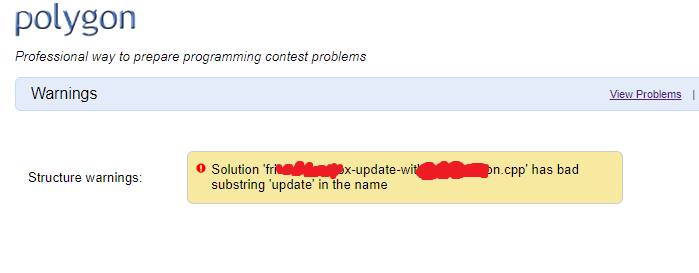There are some seemingly strange English abbreviations in our China’s CP circle, which seem not to be used by English speakers. I suspect that these names are created by Chinese people. For example:
- We often call the ICPC and the CCPC (China Collegiate Programming Contest) “ACM”, and call an ICPC or CCPC participant an “ACMer”. Now in spoken language, “ACM” is more like a symbol of competitive programming in ICPC style (≈ CP), like in “my ACM career” (我的 ACM 生涯), “school ACM training team” (学校 ACM 集训队), and “we ACMers are like this” (我们 ACMer 是这样的).
- We often call the contests NOI (National Olympiad in Informatics, China) and the NOIP (National Olympiad in Informatics in Provinces, China) “OI”, and call an NOI or NOIP participant an “OIer”.
- Some programming problem may accept multiple answers, and in China, we say that this problem uses “special judge”, even abbreviated as “SPJ”. Usually, a “special judge” is a special program written by the problem setter to check if the output content is correct. (Note that in Codeforces, each problem uses the so-called “special judge”, which is called “checker”. Even a problem that accepts a single answer uses the checker to compare the output content with the answer.)
- We often call AtCoder “AT” or “ATC”, but not “AC”, although “AC” is the official abbreviation of AtCoder (like in “AC Library”). Maybe they do not call AtCoder “AC” to not confuse “AtCoder” with “Accepted”, since the verdict “Accepted” is also abbreviated as “AC”.
- The largest ICPC regional contest to include China, the ICPC Asia East Continent Final Contest, is often called “(ICPC) EC Final” by many Chinese people.
However:
- When I search Microsoft Bing for “ACMer”, “OIer”, “special judge” and “EC Final”, I cannot find any search results other than Chinese, or English written by Chinese people (for “special judge”, I can only find the results about a special judge on the court …)
- ACM is the name of an association in the USA, not of a contest. ACM used to hold the ICPC (once named “ACM-ICPC”), but not now. So I think it is inappropriate to use the word “ACM”.
- In a blog about “special judge”, a comment asks what “special judge” means.
- If “EC Final” is widely used among English speakers, then “WC Final” (Asia West Continent Final Contest) must exist on the Internet, but I cannot find anything about it. And I do not know why “Asia East Continent” can be abbreviated as “EC” instead of “AEC” or “Asia EC”.
So my questions are:
- Do English speakers actually say the above terms?
- If the term “special judge” is not used by English speakers, what do they call the so-called “special judge”?
- How do you think about these English abbreviations in China?













